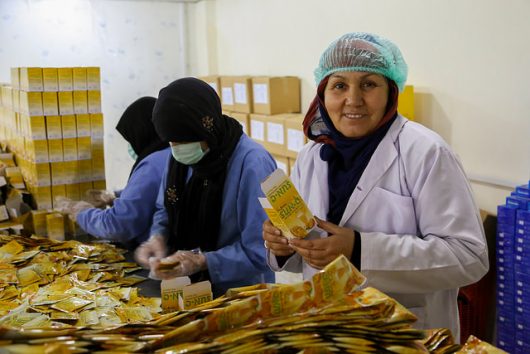Women’s Employment Key to Easing Poverty Crisis in Afghanistan

According to the most recent Afghanistan Living Conditions Survey (ALCS), the poverty rate in Afghanistan has taken an enormous leap over the past few years, rising from 38 percent in 2011-12 to 55 percent in 2016-17. In addition, the percentage of Afghans facing food insecurity jumped from 30 percent to 45 percent, and the underemployment rate (the percentage of people working in jobs that pay too little to sustain themselves) rose from 17 percent to 24 percent over the same timeframe.
The survey states that this “sharp deterioration” is mainly due to macroeconomic, security and demographic factors. These may sound like rather broad issues, but the poverty crisis in Afghanistan can be traced to two major problems.
Reduced NATO Troop Presence Increases Instability
The first of these is the departure of NATO combat troops, which took place in 2014. At its peak, NATO involvement in Afghanistan consisted of about 130,000 troops on the ground to protect civilians from the threat of terrorism. The total number of troops currently stands at about 15,000.
This reduction has made it easier for the Taliban, Afghanistan’s most prominent terrorist group, to increase its presence in the country. In fact, the BBC reported that the Taliban controlled or threatened approximately 70 percent of Afghan territory as of January.
Frequent terrorist attacks and violent conflict have led to an increase in poverty because many have been forced to flee their homes, leave their jobs and pull their children out of school in fear for their lives. This constant instability can make it difficult for families to find ways to provide for themselves.
In response to the negative effects since NATO’s transition out of Afghanistan, the Trump administration sent approximately 3,000 more NATO troops to Afghanistan at the beginning of this year. The effects of this increase have yet to be determined.
Disproportionate Age of Population Contributes to Poverty Crisis in Afghanistan
The second contributor to the poverty crisis in Afghanistan is one whose solution is less clear: the age of the population. The ALCS report indicates that 48 percent of the population is under the age of 15, meaning it has one of the youngest populations in the world.
This anomaly has created an economic dilemma for Afghanistan. The dependency ratio currently stands at 101, which means that 100 income-earning adults have to provide for 101 dependent people.
What this high number implies is that adults are having to spend more money on food, medical care and education for their children. But since most of the population is not old enough to work yet, all of these burdens are placed on a relatively small amount of income earners, which results in more money being spent than earned and leads to higher rates of poverty.
Afghanistan Makes Major Gains in Women’s Employment
One solution offered by the report is to encourage greater involvement of women in the workforce. The female labor force participation rate in Afghanistan as of 2017 is about 19 percent. Although this is the highest rate ever recorded in the country and is a great sign of progress, there is still quite a way to go for Afghanistan to match the world average of 49 percent.
Increasing measures to fight terrorism and creating employment opportunities for women are not simple tasks by any means, but they can be accomplished with hard work. Though conditions may seem dire now, the poverty crisis in Afghanistan is not unsolvable.
– Maddi Roy
Photo: Flickr
